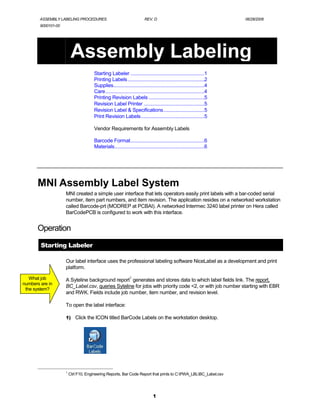Labeler Guide
?
1 like?405 views
The document describes assembly labeling procedures including: 1. Using labeling software to print labels with a barcoded serial number, item number, and revision from production data. 2. Specifications for labels, ribbons, and a separate printer for revision labels. 3. Requirements for vendors including unique barcoded serial numbers in a standardized format.
1 of 6
Download to read offline





